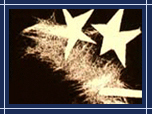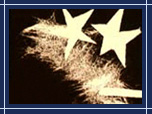Part of Spring 1991
Since the first public showing of Walter Ruttman’s Lichtspiel Opus 1 in 1921, art-based animation has established itself as a legitimate and innovative form within both film and fine art circles. Early pioneers such as Oskar Fischinger and Hans Richter created abstract films on par with modernist works in other media (including their own works in painting, cartooning, etc.). Stephanie Maxwell curated this program which traces avant-garde animation from its origins in the 1920s through to a major survey of works by contemporary animation artists. Current animators have drawn from the medium’s rich history and added to it an ever expanding repertoire of techniques from clay to computer generated imagery. Maxwell will be present to discuss the films including her own GA and Please Don’t Stop.
Fine art animators traditionally worked alone, preferring direct and minimal methods to the standard animation stand. Refining their art, many animators developed their own animation techniques. In the 1930s Claire Parker and Alexander Alexeieff created the pinboard, a board of closely-spaced straight pins whose different heights, when shadowed by side lighting, achieve the effects of wood carving or engraving; the stunning results can be seen in pieces like tonight’s Night On Bald Mountain.
Other methods have included Len Lye’s scratching on black film leader in Kaleidoscope, and painting directly on film in Free Radicals. Animators have painted on glass, expanded rotoscope techniques, used cut out animation, etc. This tradition has paved the way for the further innovations of contemporary animators. Techniques vary from Michael Connor’s Dirt, using clay animation, to Dennis Pies’ use of multi-plane animation in Ace of Light and Steve Subotnick’s abstract computer generated work. Other explorations include The Trap by Amy Kravitz, in which 2000 drawings were made with black lithographic crayon on a textured, back-lit, translucent table. Maxwell’s own work is influenced by Len Lye; her film GA is created by painting, scratching and collaging the film’s surface. It combines Lye’s scratching emulsion technique with miniature animal paintings.
The following films will be screened:
Lichtspiel Opus 1 Walter Ruttman, 5 min, 1921.
Rythmus 23 Hans Richter, 3 min, 1923.
Spiral Constructions Oskar Fischinger, 10 min, 1927-29.
Night On Bald Mountain Alexander Alexeieff and Claire Parker, 9 min, 1933.
Kaleidoscope Len Lye, 4 min, 1935.
Free Radicals Len Lye, 4 min, 1959-79.
Abstronic MaryEllen Bute, 7 min, 1952.
Glen Falls Sequence Douglas Crockwell, 6 min, 1946.
Gulls and Buoys Robert Breer, 8 min, 1972.
A Jan Lenica 7 min, 1964.
Magic Explained Diana Barrie, 4 min, 1978.
Dirt Michael Connor, 8 min, 1978.
Ace of Light Dennis Pies, 7 min, 1984.
GA Stephanie Maxwell, 5 min, 1982.
Please Don’t Stop Stephanie Maxwell, 5 min, 1988.
Music Room Steve Subotnick, 2 min, 1986.
The Trap Amy Kravitz, 5 min, 1988.
If time permits, surprise selections from a recent show of contemporary Dutch animation films will be screened.




